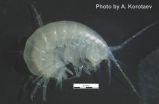The study found that canals designed to channel rainwater host microbial communities that could remove and neutralise organic pollutants in raw water. These organic pollutants are currently at trace levels in raw water - well below the United States-Environmental Protection Agency (US-EPA) drinking water standards - which is removed during water treatment processes.
Researchers from the NUS Environmental Research Institute (NERI) and the Singapore Centre for Environmental Life Sciences Engineering (SCELSE) at Nanyang Technological University (NTU) have discovered that the untapped natural ability of microbial communities could be harnessed to treat raw water even before undergoing treatment.
This process is known as 'bioremediation', a treatment that uses naturally occurring organisms to break down organic pollutants.
The study, which was published in the scientific journal Environmental Science & Technology, was conducted around the Ulu Pandan catchment area in collaboration with the Singapore's national water agency, PUB.
Microbes - Nature's "garbage cleaners"
The increased demand for water in urban centres, coupled with the elevated pressures placed on the environment by high-density living, has created a demand for efficient, environmentally sustainable solutions to manage urban watersheds. Harnessing the cleansing power of microbes provides a solution to the pressing need.
The breakthrough came about after the joint research team identified members of the entire microbial community and their functions from the aquatic ecosystem at the Ulu Pandan catchment area by extracting their DNA and RNA, the genetic blueprint of life.
Apart from the discovery that the microbes could remove and neutralise organic pollutants, the researchers also found out that the presence of aluminium, copper and potassium were critical to the community's ability to perform its ecological "cleansing" properties.
The discovery of these chemical elements' influence on the microbial community's functions paves the way for researchers to better understand their "cleansing" performance through further monitoring and study.
The project's lead scientist, Associate Professor Sanjay Swarup, Deputy Director of NERI and a Research Director at SCELSE said, "This study demonstrates the power of combining an in-depth analysis of microbial community ecology with physical and chemical characteristics.
"More importantly, with the support of government administrators, environmental sustainability could be achieved naturally through science, creating a better living environment for both man and nature."
The study also examined the differences of microbial communities in residential and industrial watershed systems. It was discovered that these two microbial communities perform different functions, which shows how various land use could influence the types of microbes and the functions they are capable of performing.
Dr Gourvendu Saxena, Research Fellow at NERI and SCELSE said, "Knowing what the microbes are doing provides information on what they are responding to. These marker-based microbial functions provide a higher resolving power than chemical markers that are currently in use.
"This study has enabled us to identify the key drivers of microbial communities and their functions at a watershed-scale. The findings can be used to understand microbial activity responsible for removing and neutralizing organic pollutants, which is critical to developing ecologically friendly waterways in rapidly urbanizing environments," said Dr Saxena who is the lead author of the study.
The study also found that the Ulu Pandan catchment area was not only well-managed but is an efficient drainage system, with pollutants below the baseline safety limits.
Professor Staffan Kjelleberg, Centre Director for SCELSE at NTU said, "For decades scientists have pursued research projects that seek to understand microbes' ability to chew-up stubborn pollutants.
"This breakthrough proves that it may be possible to push the boundaries in securing the availability of clean water through natural means and hence, maintain a more sustainable environment for Singapore and other societies."
Next phase of research
The research framework laid out in this study could be easily adopted by other cities around the world in studying their own waterways, and is being adopted by the international World Harbour Project, to which SCELSE is a party of.
The World Harbour Project is a coordinated network of researchers and managers, to bring the best practices in understanding and managing urban waterways to the world.
Moving forward, the team will continue to investigate the microbial communities' ability to self-cleanse the waterways. This is done by understanding the response to manipulating key metals, identifying the most efficient microbial community composition and establishing the conditions needed for optimal bioremediation.
Plans are in place to study the effects of plants on microbial communities and explore various waterways structure designs to determine optimal settings and parameters.
INFORMATION:
This joint study was conducted with key investigators from NERI and SCELSE, involving 17 researchers from institutions in Singapore, Sydney, Australia, Oklahoma, and Berkeley in the USA, and Beijing, China.
For media enquiries, please contact:
Amal Naquiah
Manager, Media Relations
Office of Corporate Relations
National University of Singapore
Email: amal@nus.edu.sg
Nur Amin Shah
Assistant Manager, Media Relations
Corporate Communications Office
Nanyang Technological University
Email: aminshah@ntu.edu.sg
About National University of Singapore (NUS)
A leading global university centred in Asia, the National University of Singapore (NUS) is Singapore's flagship university, which offers a global approach to education and research, with a focus on Asian perspectives and expertise.
NUS has 16 faculties and schools across three campuses. Its transformative education includes a broad-based curriculum underscored by multi-disciplinary courses and cross-faculty enrichment. Over 37,000 students from 100 countries enrich the community with their diverse social and cultural perspectives.
NUS has three Research Centres of Excellence (RCE) and 26 university-level research institutes and centres. It is also a partner in Singapore's fifth RCE. NUS shares a close affiliation with 16 national-level research institutes and centres. Research activities are strategic and robust, and NUS is well-known for its research strengths in engineering, life sciences and biomedicine, social sciences and natural sciences. It also strives to create a supportive and innovative environment to promote creative enterprise within its community.
The NUS Environmental Research Institute (NERI) is a leading centre for interdisciplinary research, education and expertise in the Environment field, particularly in issues affecting Singapore and Asia.
This year, NUS celebrates its 110th year of founding together with Singapore's 50th year of independence. As the island's first higher education institution established by the local community, NUS prides itself in nurturing generations of leaders and luminaries in Singapore and Asia.
For more information on NUS, please visit http://www.nus.edu.sg. Details on NUS' 110th Anniversary celebrations are available at nus110.sg.
About Nanyang Technological University, Singapore
A research-intensive public university, Nanyang Technological University (NTU) has 33,000 undergraduate and postgraduate students in the colleges of Engineering, Business, Science, Humanities, Arts, & Social Sciences, and its Interdisciplinary Graduate School. It has a new medical school, the Lee Kong Chian School of Medicine, set up jointly with Imperial College London.
NTU is also home to world-class autonomous institutes - the National Institute of Education, S Rajaratnam School of International Studies, Earth Observatory of Singapore, and Singapore Centre on Environmental Life Sciences Engineering - and various leading research centres such as the Nanyang Environment & Water Research Institute (NEWRI), Energy Research Institute @ NTU (ERI@N) and the Institute on Asian Consumer Insight (ACI).
A fast-growing university with an international outlook, NTU is putting its global stamp on Five Peaks of Excellence: Sustainable Earth, Future Healthcare, New Media, New Silk Road, and Innovation Asia.
The University's main Yunnan Garden campus has been named one of the Top 15 Most Beautiful in the World. NTU also has a campus in Novena, Singapore's medical district.
For more information, visit http://www.ntu.edu.sg



